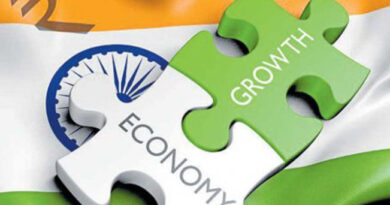New ways of lending to Indian MSMEs
Background:-
As we know that MSMEs are the growth engine of Indian Economy since its inception. The Sector is the largest employment generator after Agriculture. Large corporate also depend a lot upon Micro, Small and Medium sector’s support at every level of business activities. With the fast changing business scenario in the economy, the financial needs of the MSMEs need to be addressed with the same pace. The sector consists of two types of basic activities. These are, Manufacturing and Service activities. MSMED Act 2006 has bifurcated the same with the amount of investment. MSMEs are categorized based on the investment in Plant & Machinery or Equipment irrespective of the loan amount. It can be for the sector of manufacturing / trading / services / Hospitals / Hotels, etc.
Definition:-
| Segment | Enterprises engaged in the manufacturing , production, processing or preservation of goods | Enterprises engaged in providing or rendering of services |
| Micro Enterprise | Is an enterprise where original investment in plant & machinery does not exceed Rs. 25 Lac. | Is an enterprise where original investment in equipment does not exceed Rs.10 Lac. |
| Small Enterprise | Is an enterprise where original investment in plant & machinery is more than Rs.25 lacs but does not exceed Rs. 5 Crore. | Is an enterprise where original investment in equipment is more than Rs.10 lacs but does not exceed Rs.2 Crore. |
| Medium Enterprise | Is an enterprise where original investment in plant & machinery is more than Rs. 5 crore but does not exceed Rs.10 crore. | Is an enterprise where original investment in equipment is more than Rs 2 crore but does not exceed Rs. 5 crore. |
The above investment in Plant & Machinery and investment in Equipments should be taken for Core P&M and Equipments.
The traditional lenders to the sector were private players (Money lenders) before nationalization of Indian Banks. Limited output was expected from tiny industries and individual entrepreneurs. The concept of small scale industry came into existence as this was the sector not well organized. Nationalized Banks started funding with the pressure of Government, but with a lot of paperwork and formalities. The hesitation of visiting banks with the entrepreneurs was still there. RBI, the regulator of banks directed all the Scheduled Commercial Banks to prioritize their lending to the small and needy people of the society who are engaged in the activities defined above in addition to financing the Agriculture sector. Sympathy was shown at every level. The hurdle in the way was of collaterals and guarantees to cover the risk of financiers in case of default of repayment. GOI and SIDBI found the way to this by establishing a Trust named as CGTMSE ( Credit Guarantee Trust for Micro and Small Enterprises ) to guarantee the Credit of MSEs. Medium Sector was not covered.
The teething problem with the trust was of systems and procedures to be followed by the MLIs (Member Lending Institutes). However, the Trust was a ray of hope at least for micro and small enterprises. RBI also mandated that no collateral and third party guarantee will be insisted for the loans up to Rs.10 lakhs. The pace of lending was still slow by the banks. NBFCs took advantages of the situation and started funding at a higher rate of interest.
The poor guys did not mind this burden too and started turning towards the Non Banking Financial Companies for their financial needs. Since the demand of credit in this sector was very high and Supply was very low, the gap attracted the new generation of Tech Companies. The target group for the Fin Tech companies was the excluded portion of MSMEs.
Why Fintechs Targeted MSMEs?
- The sector is still considered as a less travelled road.
- Since Fintech is on the rise in our country and has both demand and supply side impact for Indian financial sector
Supply side – Changing business models, driving efficiency and outreach.
Demand side – Access and use of financial services.
Indian Fintech is largely a story of payments. Let us understand the importance of Fin Tech. The target group of Fin Tech is comparatively wealthier and middle class customers of Urban and metro cities, which may be re planned with the interest shown by the rural and semi urban customers.
The first time entrepreneurs facing difficulties with the existing banking system or the unbanked population can gain more from Fin techs.
POLICY SIDE :- Jandhan Yojna, UPI and solving interoperability issues help Fin techs to come forward and encase the huge opportunity available before them.
JAM (Jandhan, Adhaar and Mobile Trinity added by credit scoring through real analytics.
The biggest challenge for SMEs is to raise financing through formal banking is
- Lack of collateral and
- Lack of long history of operations (financial statements )
Although the GOI and the regulator (RBI) have mandated the financiers not to insist upon collaterals for the loan covered under MUDRA up to Rs. 10.00 lakhs entrepreneurs, yet, the formal bankers with the old mind set do not adhere to strictly to the guidelines. This in turn creates a right type of opportunity for the Fintechs.
The Fintechs are on the legally permitted way of partnership with the private bankers, i.e Amazon with Yes Bank for promoting its “Seller Lending Program . This partnership provides Secure and Unsecure loans between Rs.5.00 lakh to 1.00 Crore. The facility of Opening of Current Accounts , trade services, forex payment gateway., loan products etc are provided by Yes Bank at competitive rates. Amazon provides easy market access to the bank’s customers.
Likewise, Flipcart Partnership with Axis Bank, Bajaj Fin Serve and lending cart is doing the job exceedingly well by financing the MSMEs. Snapdeal has already crossed the disbursal figure of Rs.1000 Crore Collateral free loans with the help of Capital Assist. SBI partners to provide loans to e commerce retailers. The bank has a specially designed product as E- smart SME working capital product.
Payment Fintechs – Mobile Wallets and Digital Payment Services (Innovations and the Supply side ) _ Such transactions are growing day by day have touched a trillion in number. The main players are PayTM, Mobikwik, Citrus and PayU. Many more are in the queue. Smartphone, Internet and online shopping is becoming a fashion for the Gen Y. GOI is also giving a boost to digital transactions . MSEs will be given some concession in Rate of Interest for the transactions done digitally.
Alibaba is making huge investment in PayTM. In the supply side , the aggregators like Policy Bazaar and Funds India are providing insurance and Mutual Fund Investment opportunities at comparable rates. These companies play a role of middlemen leveraging data and using algorithm to provide low cost intermediation services.
Why to go for P2P Lending or Borrowing?
- P2P (Peer to Peer) platform may fetch higher returns on lending but returns are not assured.
- The fin tech companies are becoming first choice of the GEN Y because of their faster way of providing choice of availment of credit with total transparency.
- The credit is made available to the needy by giving a lot of weight age to their social behavior by extra plating financial behavior from social activities.
- Borrowers are charged registration and processing fee only after they get a loan. Interest payment is done separately.
- The global market for P2P lending is expected to grow at a CAGR of 60 per cent to USD 1 Trillion by 2025 from 9 billion in 2014. US, China and UK are top P2P lending countries. Countries like ours are on the way to follow the path.
- Since credit demand of nearly 10 percent MSMEs only is met by the formal banking system, the NFBCs are next to banks. But, still the gap of demand and supply is huge and the P2P Lending platform, as on date is seen the only alternate with transparency.
Factors that support Demand for Fin Techs :-
- Rapid expanding of Internet and Mobile penetration
- Digital savvy Young Generation
- Supporting regulatory environment
- Inefficiencies prevailing in the financial sector
- Unmet demand from the under banked/unbanked population. Two billion people on the earth are still financially excluded of them 21 percent are unbanked living in India.
Need to regularize the lending:- Looking to the growing credit needs of the MSMEs and lead taken by the Fin Techs with the technology reach, it was felt by the regulator that this sector cannot be left unwatched or un regularized. Reserve Bank of India, the regulator for banks and financial institutions, after due deliberations has come out with regulatory norms for the P2P Lenders too. They will be treated as NBFCs only in addition to the Capital Adequacy norms with certain caps.
Government Interventions to support fin tech in India-
Promoting fin tech :- The Government of India encouraged startups by its popular program Startup India that was also supported by SEBI by easing of startup listing norms. RBI started Payment System Innovation awards in the field of Finance and Technology . Telangana Government’s T- Hub is the few steps towards promoting Fin Techs. GOI is also creating an enabling environment for fin techs through various initiatives i.e licensing of payment banks, issuance of guidelines on P2P by RBI and SEBI regulations on Crowd funding. The government has shown its clear cut intention to promote and improve mobile and internet usage. This step is also seen as an encouraging idea towards digital transactions that will ultimately help the MSMEs. As per report of the leading newspaper Mint, Finance ministry may give GST Compliant MSMEs access to loans at discounted rates to reward early adopters and encourage others to comply.
Security Issues:- Safety of loans for the lenders is not guaranteed as the portfolio is totally unsecure in nature, but one of the fundamental rule of economics applies everywhere, Higher the Risk, Higher the profit. On the other hand the Fintech companies focus a lot in scrutinizing the applicants in determining their eligibility that gives a lot of comfort to the lender. GOI is also in the process of creating a Registry of movable assets of MSMEs which will enable the lenders to access whether such assets are pledged with any other lenders before they sanction the loan. However, the loans through P2P platform are considered as unsecure and the repayment entirely depends upon the wish of the borrower.
Fin Techs in Bank’s Business Model: – Many banks are in the process of partnering with the Fin Techs. Banks can profit from the Fin Tech Revolution if they opt for a new model of banking based on customer values. This model may also be opened to the external world provided the bankers focusing the MSMEs, embrace innovation at their core. They need to transform the entire corporate culture increasing the level of Risk appetite if they wish to survive in such a competitive business environment. The new model will help them maximizing the profit and business volume by a greater reach to the first time customers.
Collaboration with Fin Techs will reduce the cost of funds by deploying the surplus funds in a faster way and ultimately the yield on advances will go up. Although the teething problem will always be there initially to understand the system and migrating it with the traditional one, yet the bankers will be able to create a huge customer base which will help them cross sale the customized products .
Finally, the growth engine of Indian Economy (MSMEs) are likely to see ACHHE DIN in days to come by way of alternate/multiple sources of getting timely credit due to easy access to the system and continuous government initiatives.
(Source: – few contents have been taken from the study material received from RBI/CAB ).
By Ramkaran Singh
Chief Manager (Faculty )
Union Bank of India
Staff Training Centre, Ahmedabad



